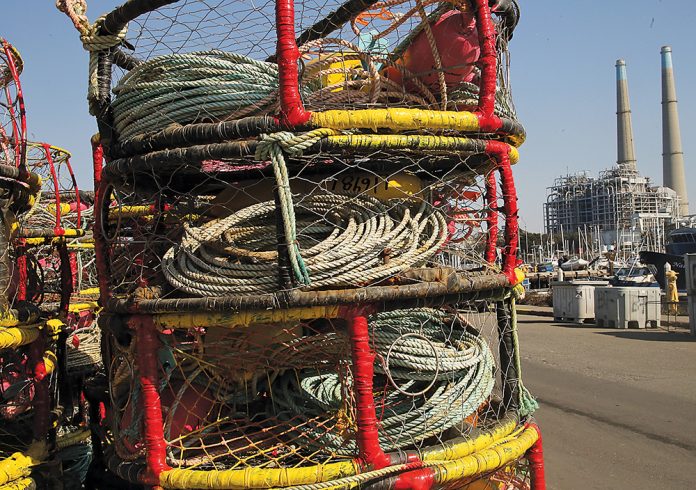
MOSS LANDING—As commercial crab fishermen prepare for the season to begin on Nov. 1, they are also grappling with a strict set of new regulations that start the same day, which some say could severely curtail their livelihood.
The new rules, created by the California Department of Fish and Wildlife (CDFW), are collectively known as the Risk Assessment Management Program (RAMP).
Wildlife officials say the rules are meant to stop blue whales, humpback whales and leatherback turtles from becoming entangled in the lines connected to crab pots and anchored to buoys floating on the surface of the water.
According to the National Atmospheric and Oceanic Administration, 46 whales were confirmed entangled in 2018 off the coasts of Washington, Oregon and California.
Under RAMP, California’s coast is divided into seven zones. CDFW officials perform a flyover of each zone, and if they see 20 or more whales—or a single leatherback turtle—the director of the agency can delay the season or stop fishing, which could require the crabbers to pull up their traps.
The director can also end the season early, says CDFW Senior Environmental Scientist Ryan Bartling.
In addition, crabbers must now report all their activity to the CDFW, to give wildlife officials a broader picture of where their activity is in relation to that of the whales.
But the good news, Bartling says, is that a sighting does not automatically trigger a closure. Instead, the director has discretion to look at the whole picture and decide whether there is enough of a risk to warrant closure.
Bartling says the regulations are the result of a five-year collaborative process by the California Dungeness Crab Fishing Gear Working Group that included crab fishermen, conservationists and the U.S. Coast Guard, among others.
“The goal is to the extent possible minimize entanglements,” Bartling said. “But it does have the potential to impact the fisheries.”
Tim Obert, 35, says he has been fishing salmon and crab for about two decades. He places 400 crab pots every year.
The guidelines, he says, are “overkill,” and target an industry that largely goes out of its way to protect the ocean environment they depend upon for their livelihood.
He says that crab fishermen last year agreed to “sit in” during the Thanksgiving holiday—during which consumer demand for crab is at its peak—in an effort to protect whales. They also changed the way they rope their gear to reduce the risk of entanglements.
“We’re trying to be cautious in what we do, crabbing safely and sustainably,” he said. “We’re doing this job because we love the sea. We love the ocean. We love the wildlife. And they are painting this picture of us as bad people for doing what we’re doing.”
Obert says that ship strikes—which are typically fatal—are a far worse problem for marine mammals such as whales.
According to Obert, there are about 150 ship strikes per year.
Obert worries that the rules will put many crab fishermen out of business, which in turn will have a chain effect on seafood salespeople and restaurants.
“I want the public to know that these kinds of things really do impact families, and coastal communities,” he said. “These people base their jobs and lives and everything in the fishing industry to bring a quality product to market. We’re definitely not out here trying to hurt any sea life.”
For information, click here.











